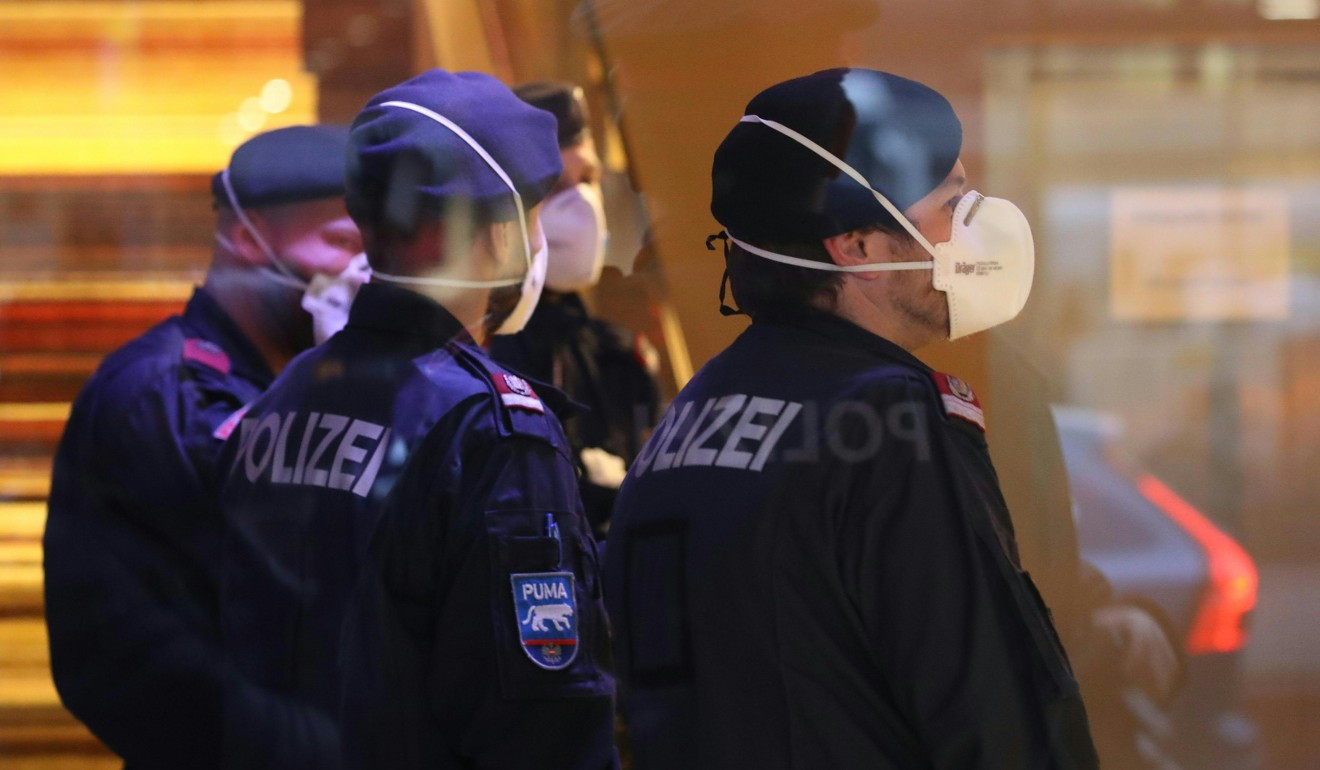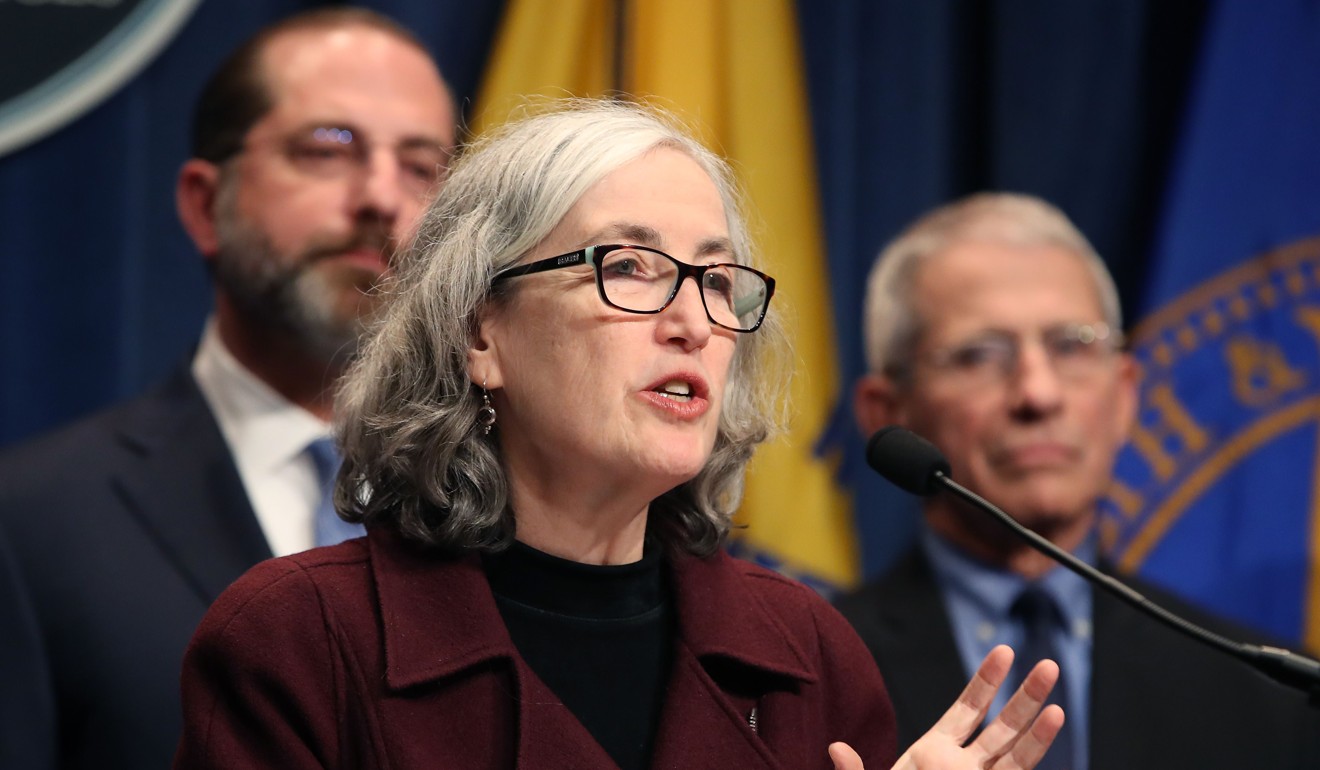
Coronavirus: US outbreak now inevitable, leading American health official warns
- ‘It is not so much a question of if, but when,’ says Nancy Messonnier of the Centres for Disease Control and Prevention
- ‘Data over the last week has raised our expectation that we are going to have community spread here,’ she says
“We expect we will see community spread in this country. It’s not so much a question of if this will happen any more, but the rather more correct question to be asking is, ‘When this will happen and how many people in this country will have severe illness?’” said Nancy Messonnier of the Centres for Disease Control and Prevention (CDC).
“We will maintain, for as long as practical, a dual approach [in which] we continue measures to contain this disease but also employ strategies to minimise the impact on our communities,” said Messonnier, director of the CDC’s National Centre for Immunisation and Respiratory Diseases.
“The data over the last week in the spread in other countries has certainly raised our level of concern and raised our level of expectation that we are going to have community spread here,” she said. “We are asking the American public to prepare for the expectation that this might be bad.”
Messonnier said “non-pharmaceutical intervention” (NPI) measures such as school closures and other social distancing policies should be implemented only at the community level, stressing that these actions need not be applied uniformly across the United States.
“What is appropriate for one community seeing local transmission won’t necessarily be appropriate for a community with no local transmission,” she said.
The CDC has issued detailed guidelines on NPI measures that regions can take in the event of mass local transmission. These acts range from dividing students at schools into smaller groups, delaying elective surgeries and reorganising triage services at clinics and hospitals. The plan is similar to guidelines used in the US during a 2017 flu epidemic.
Globally some 80,000 people have been infected by the virus, with most cases in China. The death toll so far is over 2,700, with more than 40 deaths occurring outside mainland China as of Tuesday.
Responding to the situation, equity markets have continued to take a beating. The Dow Jones Industrial Average suffered a 3.1 per cent drop on Tuesday, a day after plunging 3.6 per cent on virus worries.
China hits back at ‘coronavirus overreaction’ with travel warning for US
In a separate briefing on Tuesday, the US Department of Health and Human Services (HHS) played down Messonier’s remarks and defended comments by the department and President Donald Trump that the contagion is under control in the US.
HHS Secretary Alex Azar attributed any sense that the US government’s messages are conflicted to “radical transparency”.
“All of this is part of the same message, which is this is a very serious public health condition worldwide,” Azar said. “We’re taking this incredibly seriously here in the United States, we’re doing the most aggressive containment effort in modern history to prevent further spread in the United States.
“We’re going to continue taking those measures, but we are realistic that we will see more cases, and as we see more cases we might have to take community mitigation efforts.”
The CDC’s principal deputy director Anne Schuchat, meanwhile, said at the HHS briefing that Americans should consider Covid-19 to be on the level of “a bad flu year or even the 2009 pandemic”.

The Trump administration has come under intense scrutiny this week over concerns that it has not made adequate preparations to deal with the possibility of a wider outbreak of Covid-19.
Did the US overreact to the coronavirus outbreak in China?
Testifying at a Senate budget hearing on Tuesday, Azar faced tough questions about his agency’s emergency request for US$2.5 billion to fight the outbreak.
Senator Richard Shelby, the Republican chairman of the Senate Appropriations Committee, described the amount as a “lowball” request.
“It could be an existential threat to a lot of people in this country,” Shelby said. “So money should not be an object. We should try to contain and eradicate this as much as we can, both in the US and helping our friends all over the world.”
Senator Rick Scott, a Republican from Florida, demanded answers from the Department of Homeland Security on whether it planned to further tighten travel restrictions. The US currently bars entry to all foreigners who have recently been in mainland China.
“The United States must continue to do everything we can to contain infection cases and stop the spread of the Chinese coronavirus,” Scott said in a statement, which repeatedly referred to the disease as the “Chinese coronavirus”.
Officials from the World Health Organisation (WHO) have urged countries to avoid referring to the contagion by that name to avoid stigmatising Chinese citizens.
Asked about the criticism the administration was facing about its preparedness, Messonnier, a 25-year veteran of the CDC, said the agency was “never going to ever be able to be so completely prepared that we're prepared for any inevitability”.
“I continue to hope that in the end, we’ll look back and feel like we are overprepared,” she said. “That is a better place to be than being underprepared.”
Secretive Korean sect linked to coronavirus outbreak held Wuhan meetings
Bruce Aylward, a WHO assistant secretary general, said on Tuesday that an international team of infectious diseases experts that returned this week from a fact-finding mission in China found little evidence of undetected mild cases despite some epidemiologists’ contention that a number of cases had gone unobserved.
This means that current fatality rates for the disease – estimated by the WHO at 2 per cent to 4 per cent in Wuhan and 0.7 per cent outside the city – are likely to give a fairly precise idea of the outbreak’s severity.

At the HHS briefing, the director of the US National Institute of Allergy and Infectious Diseases, Anthony Fauci, said that his agency’s first human “phase one” trials for a Covid-19 vaccine should be underway within about six weeks, and that an additional three to four months would be needed to determine whether it is working as expected.
Phase two will require “hundreds, if not thousands” of individuals in areas where active transmissions are occurring and six to eight more months even if trials are proceeding “at rocket speed”, Fauci said.
He added that his agency was treating infected Americans repatriated from the Diamond Princess cruise ship with remdesivir, an experimental antiviral drug produced by Gilead Sciences. It is a duplication of trials underway in China, he said, adding that they would confirm whether the treatment is effective “within a reasonable period of time”.
Purchase the China AI Report 2020 brought to you by SCMP Research and enjoy a 20% discount (original price US$400). This 60-page all new intelligence report gives you first-hand insights and analysis into the latest industry developments and intelligence about China AI. Get exclusive access to our webinars for continuous learning, and interact with China AI executives in live Q&A. Offer valid until 31 March 2020.


